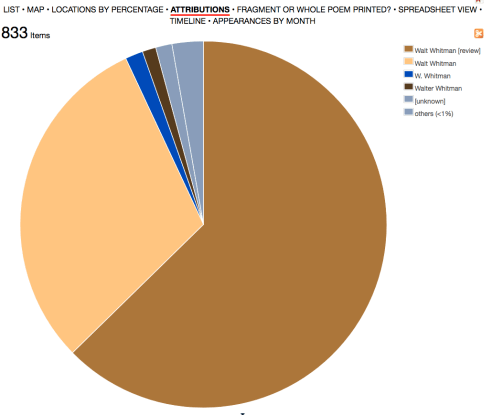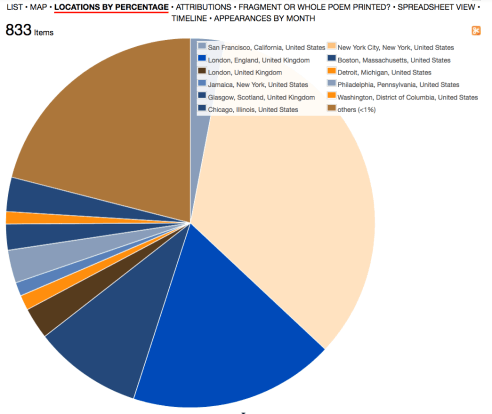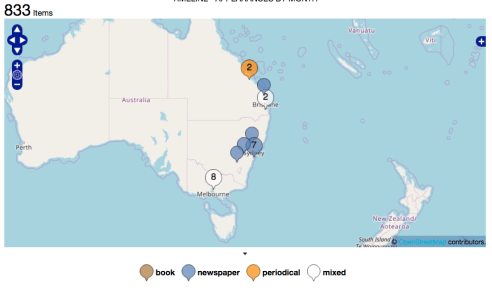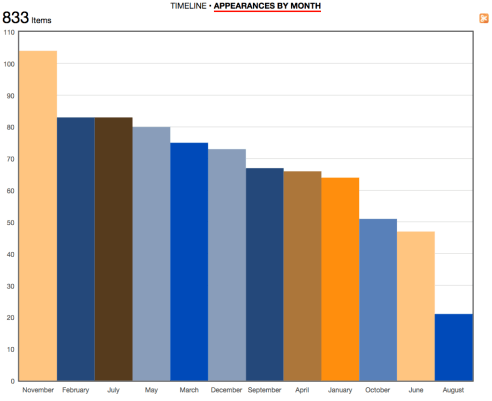
Attribution
This visualization shows the many ways Whitman's poems were - or were not - attributed when they were reprinted. Learn more...

Reprint Locations
A pie chart showing the locations where Whitman's reprinted poems appeared. Learn more...

Map Views
These geographic representations of Whitman's poetry's appearances suggest the wide scope of his work's circulation in English. Learn more...

Appearances by Month
Which months were the most popular for reprinting Whitman's poems? This bar graph tracks reprint timing by month. Learn more...
